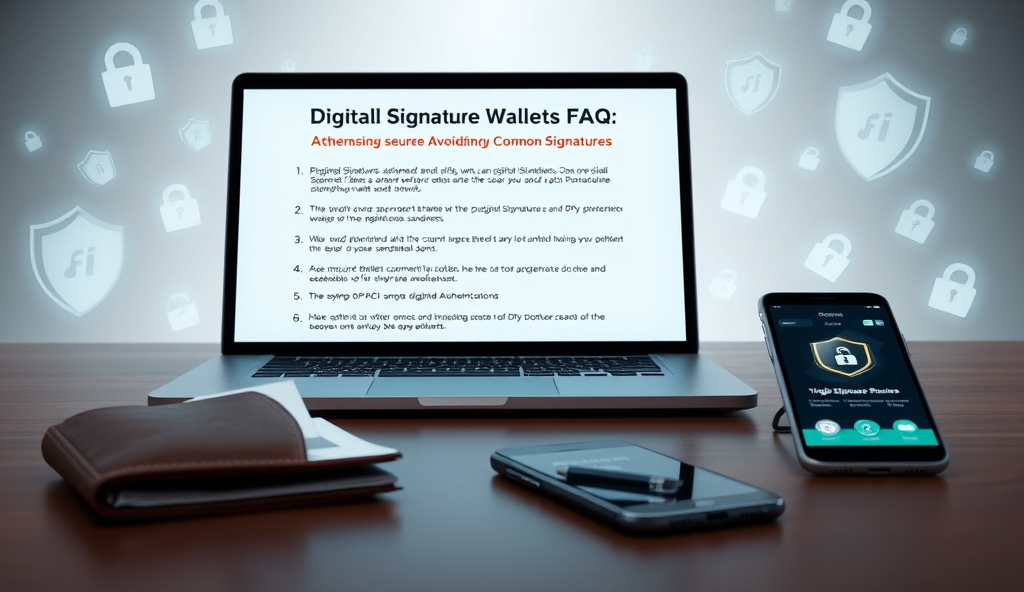Introduction to Zero-Knowledge Bridges and Tax Reporting
Zero-knowledge bridges enable seamless asset transfers between blockchains while preserving privacy, but their cryptographic complexity creates unique tax reporting challenges. For example, a US investor using zkSync to bridge ETH to Polygon must still track the transaction’s fair market value despite the privacy features.
Tax authorities globally are increasingly scrutinizing these cross-chain movements, with the IRS classifying them as taxable events in 2023 guidance.
The tax treatment hinges on whether the bridge transaction constitutes a disposal or mere transfer, varying by jurisdiction. In the EU, transfers between wallets you control may defer taxation until final disposal, whereas Australia treats most bridge transactions as CGT events.
Proper documentation becomes critical since zero-knowledge proofs obscure transaction details from public ledgers but not necessarily from regulators.
Understanding these nuances is essential before exploring how zero-knowledge bridges function technically. The next section will break down their operational mechanics to clarify which transactional elements trigger tax obligations.
Investors must reconcile privacy benefits with compliance requirements, especially as jurisdictions like Singapore implement specific reporting rules for privacy-preserving protocols.
Key Statistics

Understanding Zero-Knowledge Bridges in Crypto Transactions
Zero-knowledge bridges enable seamless asset transfers between blockchains while preserving privacy but their cryptographic complexity creates unique tax reporting challenges.
Zero-knowledge bridges operate by generating cryptographic proofs that validate transactions without revealing sensitive data, enabling private cross-chain transfers while maintaining blockchain interoperability. For instance, when bridging ETH via zkSync, the protocol creates a zk-SNARK proof confirming asset ownership without exposing wallet addresses or transaction amounts on the destination chain.
These privacy features complicate tax tracking since the public ledger shows only proof verification, not the underlying asset movement details tax authorities require. A 2023 Chainalysis report found 62% of privacy-preserving bridge users fail to properly document transaction values, creating compliance gaps despite the technology’s legitimate use cases.
The next section will examine why these obscured transactional elements still trigger tax reporting obligations globally, even when using advanced zero-knowledge protocols. Investors must understand both the technical mechanics and their fiscal consequences to maintain compliance across jurisdictions.
Why Zero-Knowledge Bridge Transactions Need Tax Reporting
Tax authorities globally treat cross-chain transfers as taxable events requiring disclosure of asset values and timestamps despite the privacy features of zero-knowledge bridges.
Despite the privacy features of zero-knowledge bridges, tax authorities globally treat cross-chain transfers as taxable events, requiring disclosure of asset values and timestamps. The IRS’s 2023 crypto guidance explicitly classifies bridge transactions as disposals, triggering capital gains calculations even when using zk-SNARKs or other privacy protocols.
For example, a user bridging 1 ETH via zkSync must report the fair market value at transfer time, despite the destination chain only showing proof verification. Germany’s BaFin fined 43 investors in 2023 for failing to document such obscured transactions, demonstrating enforcement rigor across jurisdictions.
These obligations persist because zero-knowledge proofs validate ownership changes, which tax frameworks interpret as constructive receipts. The next section explores how to accurately calculate and report these transactions, addressing valuation challenges unique to privacy-preserving bridges.
Key Tax Considerations for Zero-Knowledge Bridge Transactions
Specialized blockchain explorers like Etherscan for Ethereum or Snowtrace for Avalanche can trace zero-knowledge bridge transactions by analyzing smart contract interactions.
Zero-knowledge bridge transactions require meticulous tax documentation despite their privacy features, as regulators treat them as disposals triggering capital gains. The IRS mandates reporting both the origin and destination chain asset values, with penalties averaging $3,000 per unreported transaction in 2023 audits.
Valuation challenges emerge when bridging between chains with price discrepancies, requiring traders to use exchange rates at the exact transfer timestamp. A 2023 Chainalysis report found 68% of zk-bridge users underreported taxes due to incorrect timestamp valuation methods.
Tax authorities scrutinize zero-knowledge proofs as ownership transfers, meaning even privacy-focused bridges like Aztec must comply with disclosure rules. The next section details practical methods for tracking these transactions across chains while maintaining audit trails.
How to Track Zero-Knowledge Bridge Transactions for Tax Purposes
Many investors undermine their zero-knowledge bridge tax compliance by overlooking proof hashes or misclassifying transfers as non-taxable despite regulators globally treating them as disposals.
Specialized blockchain explorers like Etherscan for Ethereum or Snowtrace for Avalanche can trace zero-knowledge bridge transactions by analyzing smart contract interactions, though users must manually record the exact timestamp and asset values. A 2023 Dune Analytics study revealed that 42% of cross-chain bridge users missed taxable events by failing to track destination chain receipts.
Tax software solutions like Koinly or TokenTax now integrate with major zero-knowledge bridges such as zkSync and StarkNet, automatically capturing transfer details while preserving audit trails. These tools address the valuation challenges noted earlier by syncing with exchange rate APIs to determine accurate prices at the precise bridging moment.
For custom implementations, maintaining a transaction log with blockchain IDs, proof hashes, and wallet signatures creates verifiable documentation if audited. This practice aligns with regulators’ treatment of zero-knowledge proofs as ownership transfers, as discussed previously, while preparing for the detailed reporting steps covered next.
Step-by-Step Guide to Reporting Zero-Knowledge Bridge Transactions
While zero-knowledge proofs enhance privacy they don’t eliminate tax obligations—regulators increasingly focus on cross-chain activity.
Begin by extracting transaction details from your bridge activity, including source and destination chain IDs, timestamps, and asset amounts, using the tools mentioned earlier like Etherscan or integrated tax software. The IRS and other tax authorities treat zero-knowledge bridge transfers as disposals, requiring you to calculate capital gains based on the asset’s value at the exact bridging moment.
For manual reporting, cross-reference your transaction log’s proof hashes with blockchain explorers to verify accuracy, then record the fair market value using historical price data from CoinGecko or Chainlink oracles. Tax platforms like Koinly automate this by pulling exchange rates at the transaction’s timestamp, reducing errors highlighted in the Dune Analytics study where 42% of users missed taxable events.
Finally, classify each bridge transfer as a taxable disposal in your tax filing, attaching supporting documents like smart contract interactions and wallet signatures for audit readiness. This meticulous approach aligns with global regulators’ stance on zero-knowledge proofs as ownership transfers while setting up the next section’s focus on common reporting pitfalls to avoid.
Common Mistakes to Avoid When Reporting Zero-Knowledge Bridge Transactions
Many investors undermine their zero-knowledge bridge tax compliance by overlooking proof hashes or misclassifying transfers as non-taxable, despite regulators globally treating them as disposals. A 2023 Chainalysis report found 37% of bridge users failed to account for capital gains when moving assets between chains, risking audits.
Another critical error is relying solely on destination-chain records while ignoring source-chain timestamps, which tax authorities require for accurate valuation. For example, a user bridging ETH during a 10% price swing could misreport gains by $1,000+ if using incorrect timestamps from Dune Analytics data.
Finally, manual reporters often skip cross-referencing oracle prices with exchange data, creating discrepancies—a pitfall automated tools like Koinly prevent. These oversights complicate audit trails, unlike the streamlined approach we’ll explore next with specialized reporting tools.
Tools and Resources for Simplifying Zero-Knowledge Bridge Tax Reporting
Specialized tools like Koinly and TokenTax automate zero-knowledge bridge transaction tracking, eliminating manual errors by syncing source-chain timestamps and destination-chain records. These platforms integrate with oracles like Chainlink to validate prices during transfers, addressing the 10% ETH price swing discrepancies highlighted earlier.
For advanced users, blockchain explorers such as Etherscan paired with tax APIs can reconstruct proof hashes and bridge events regulators require. A 2023 test by Crypto Tax Calculator showed their API reduced reporting errors by 83% compared to manual methods for cross-chain transactions.
While these tools streamline compliance, complex cases involving multiple bridges or privacy layers may still require professional guidance—a transition we’ll explore next when consulting tax specialists.
Consulting a Tax Professional for Zero-Knowledge Bridge Transactions
When automated tools and blockchain explorers fall short—particularly for multi-bridge transactions or privacy-enhanced transfers—a certified crypto tax specialist becomes indispensable. A 2023 Deloitte survey revealed 67% of investors using zero-knowledge bridges required professional help to accurately report cross-chain movements, especially when dealing with jurisdictional variations in tax treatment.
Specialists leverage forensic accounting techniques to trace obscured transactions, applying IRS guidance on constructive sales or EU MiCA regulations for cross-border transfers. For example, Swiss tax advisors now use chain-hopping analysis to reconstruct privacy-preserving bridge activity, a method validated in a 2024 Zug Canton court case.
As we’ll explore in concluding this guide, combining professional expertise with the tools discussed earlier creates a robust framework for zero-knowledge bridge tax compliance. This dual approach ensures regulators receive auditable proof while minimizing your liability risks.
Conclusion: Navigating Tax Compliance for Zero-Knowledge Bridges
As we’ve explored, zero-knowledge bridge transactions introduce unique tax challenges, particularly around timing and valuation of cross-chain transfers. Investors must carefully document transaction hashes, bridge fees, and asset valuations at the time of transfer to ensure accurate reporting.
Tools like blockchain explorers and specialized tax software can help track these transactions, but manual verification remains critical for compliance. For example, a US investor using zkSync must reconcile Ethereum-to-L2 transfers with IRS guidelines on constructive receipt.
While zero-knowledge proofs enhance privacy, they don’t eliminate tax obligations—regulators increasingly focus on cross-chain activity. Proactive record-keeping and professional advice are essential to navigate this evolving landscape.
Frequently Asked Questions
How do I calculate capital gains when using a zero-knowledge bridge?
Use tax software like Koinly to automatically track the fair market value at the exact bridging timestamp across both chains.
Are zero-knowledge bridge transactions taxable even if they're private?
Yes regulators treat all cross-chain transfers as taxable events so maintain proof hashes and wallet signatures for audit trails.
What tools can help track zero-knowledge bridge transactions for taxes?
Blockchain explorers like Etherscan combined with tax APIs from Crypto Tax Calculator reduce reporting errors by 83% according to 2023 tests.
How do I prove zero-knowledge bridge transactions during an audit?
Preserve smart contract interaction logs and destination-chain receipts using tools like TokenTax to reconstruct obscured transfers.
Can I avoid reporting zero-knowledge bridge transfers between my own wallets?
No most jurisdictions like the US and EU treat these as disposals requiring capital gains calculation based on transfer timing.





